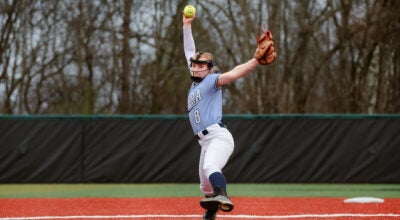H1N1 vaccine research conducted locally
Published 2:45 pm Tuesday, September 1, 2009
Clinical Research Consultants Inc. of Alabaster became the final research site Aug. 28 to wrap up its clinical study of a vaccine for the H1N1 virus, according to lead researcher Dr. Carol Johnson.
The group was one of only 15 principal investigators around the country testing the vaccine for its safety and immogenicity or ability to build antibodies in the immune system.
“When you are looking at immogenicity, you want it to work and you want it to work safely,” Johnson said. “So far, none of the local participants have experienced any flu-like symptoms or other typical side effects such as itching around the injection site, rashes or redness.”
Sub-investigator Rick Kilgore said 63 people participated in the study, with 38 being between the ages of 18-65. Only 25 were over the age of 65 because Kilgore said this portion of the population appears less susceptible to the disease.
In order to provide as much vaccine as possible in a pandemic situation, Kilgore said the study is looking at how to make an effective vaccine with as little antigen as possible. In response to an antigen, your body makes antibodies, which will protect you from future contact to an influenza virus containing a similar antigen.
Kilgore said the study tested three different doses of the H1N1 vaccine. There were two vaccinations given 21 days apart. Blood work was drawn initially, 21 days prior to the second vaccination and then again 21 days after the second vaccination.
“We wanted to know the level of immunity 21 days after the vaccine was administered,” Kilgore said. “We have to determine whether or not the body has developed antibodies.”
Kilgore said by mid-September researchers should know whether or not the second dose does in fact boost a person’s immunity against the virus.
According to Johnson, the strain originated in Canada and Mexico in humans. She said it then transferred to pigs, which have receptors for both human and avian flu strains. At some point, researchers believe the strain then transferred back to humans.
Johnson said the four strains come together in a random assortment.
“Its as if you had a deck of cards — one human flu, two swine flu and one avian flu — and you just put them together and shuffled,” Johnson said. “We have to identify those strains to ensure we’re targeting them all or else the vaccine doesn’t work.”
Johnson said this combination is what makes the H1N1 strain so different from the common flu. She said it makes the virus harder to predict.
What is predictable she said is the way the virus is transmitted. Johnson said it is important for people to understand the strain cannot be contracted by eating pork, but can be contracted just like most other flu strains.
“People need to understand that the transmission is person to person in large droplets,” Johnson said. “If they are coughing they really need to stay home. If they don’t, they need to keep their hands washed and cough into their sleeve.”
The researchers have worked on a flu study for three years in a row now. Johnson said the company was scheduled to test a bird flu vaccine until the swine flu became pandemic.









